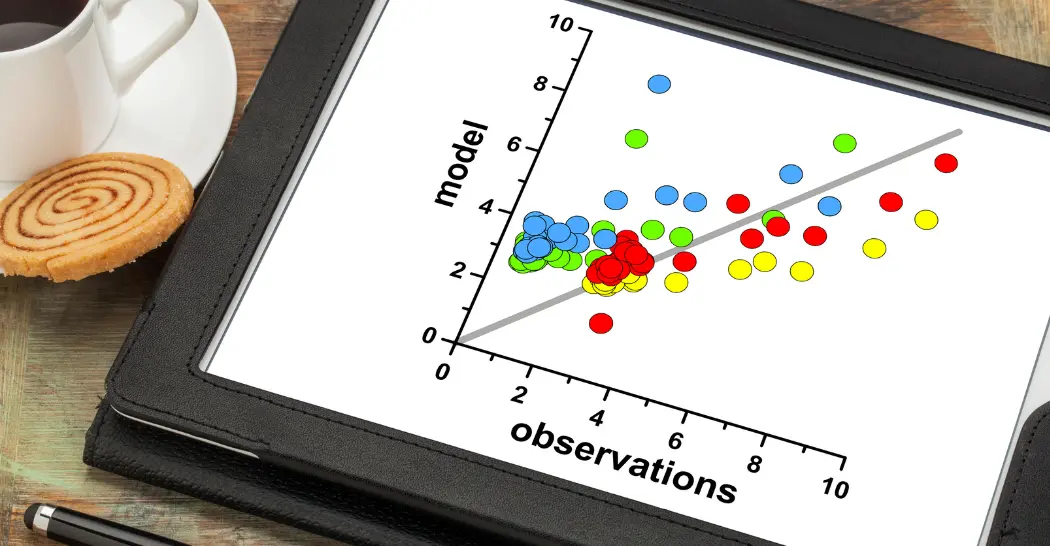Observation, the cornerstone of scientific inquiry, has evolved over the years, transcending the boundaries of qualitative assessments. In the realm of precision and accuracy, quantitative observations have emerged as a powerful tool to decipher the intricacies of the world around us. This blog post aims to delve into the essence of quantitative observations, exploring their significance, applications, and the transformative impact they have had on various fields.
What are Quantitative Observations:
Quantitative observations involve the measurement of specific attributes or characteristics using numerical values. Unlike qualitative observations that rely on descriptive language, quantitative observations provide a precise and measurable representation of phenomena. These observations can be expressed through various units, facilitating comparisons, analyses, and statistical evaluations.
Examples of Quantitative Observations:
Let’s delve into specific examples across various fields to illustrate the application of quantitative observations:
1. Scientific Research:
Example: Determining the Rate of Enzyme Activity
In biochemistry, researchers often quantify enzyme activity using numerical measurements. For instance, the rate of an enzyme-catalyzed reaction can be expressed in units like micromoles of substrate transformed per minute. By precisely measuring reaction products over time, scientists can analyze and compare the efficiency of different enzymes or experimental conditions.
2. Economics and Finance:
Example: Stock Market Analysis
Quantitative observations are integral to stock market analysis. Investors and analysts use numerical data to assess stock performance. Metrics like price-to-earnings ratios, dividend yields, and volatility indices are quantified to make informed investment decisions. Statistical models, such as regression analysis, help predict future stock prices based on historical data.
3. Medicine and Healthcare:
Example: Clinical Trials and Drug Efficacy
In clinical trials, researchers collect quantitative data to evaluate the effectiveness of new drugs. Patient outcomes, measured through parameters like blood pressure, cholesterol levels, or tumor size, are quantified to determine the drug’s impact. Statistical analyses of these quantitative observations help establish the drug’s efficacy and safety profile.
4. Environmental Monitoring:
Example: Air Quality Assessment
Quantitative observations are crucial in monitoring air quality. Instruments measure concentrations of pollutants such as particulate matter (PM), nitrogen dioxide (NO2), and ozone. These numerical data points allow environmental scientists to assess pollution levels, identify sources, and formulate policies to mitigate the impact on public health and the environment.
5. Physics:
Example: Gravitational Acceleration Measurement
In physics, the acceleration due to gravity on Earth is quantified as approximately 9.8 meters per second squared (m/s²). This numerical value allows physicists to predict the motion of objects in free fall and design experiments to study gravitational effects. Quantitative observations in physics form the basis for mathematical models and the understanding of fundamental forces.
6. Social Sciences:
Example: Survey Research in Sociology
Quantitative methods are widely used in social sciences. In sociology, researchers employ surveys with quantifiable responses to gather data on social attitudes, behaviors, or demographics. Statistical analysis of survey results allows sociologists to identify patterns, correlations, and trends within populations.
Significance of Quantitative Observations:
- Precision and Accuracy: Quantitative observations contribute to precision and accuracy in scientific investigations. By assigning numerical values to observations, researchers can minimize subjectivity and enhance the reproducibility of experiments.
- Objective Analysis: The numerical nature of quantitative observations fosters objectivity in data interpretation. Researchers can apply statistical methods to draw conclusions, making the scientific process more robust and reliable.
- Facilitating Comparisons: Quantitative observations enable the comparison of data across different experiments, settings, or timeframes. This allows researchers to identify patterns, trends, and variations, leading to a deeper understanding of the phenomena under study.
Applications of Quantitative Observations:
- Scientific Research: In fields such as physics, chemistry, biology, and environmental science, quantitative observations form the backbone of rigorous experimentation. Researchers measure variables, conduct statistical analyses, and draw conclusions based on numerical data.
- Economics and Finance: Quantitative observations play a crucial role in economic and financial analyses. Market trends, inflation rates, and economic indicators are quantified to make informed decisions, predict future outcomes, and assess risk.
- Medicine and Healthcare: From clinical trials to patient monitoring, quantitative observations are indispensable in the healthcare sector. Vital signs, laboratory results, and treatment efficacy are quantified to diagnose diseases, evaluate treatment outcomes, and improve patient care.
- Environmental Monitoring: Environmental scientists employ quantitative observations to monitor air and water quality, track biodiversity, and assess the impact of human activities on ecosystems. This data-driven approach informs policies aimed at environmental conservation and sustainability.
Challenges and Considerations:
- Measurement Error: Despite their precision, quantitative observations are susceptible to measurement errors. Researchers must be vigilant in minimizing and acknowledging potential sources of error to ensure the reliability of their findings.
- Standardization: Achieving consistency in quantitative observations across different studies or laboratories can be challenging. Standardization of measurement techniques and units is essential for meaningful comparisons and meta-analyses.
Conclusion:
Quantitative observations have revolutionized the way we perceive and comprehend the world. Through the lens of numerical precision, researchers across diverse disciplines gain deeper insights, unravel complex phenomena, and contribute to the collective knowledge of humanity. As we continue to refine measurement techniques and enhance data analysis methods, the role of quantitative observations in shaping the future of scientific inquiry remains paramount.


